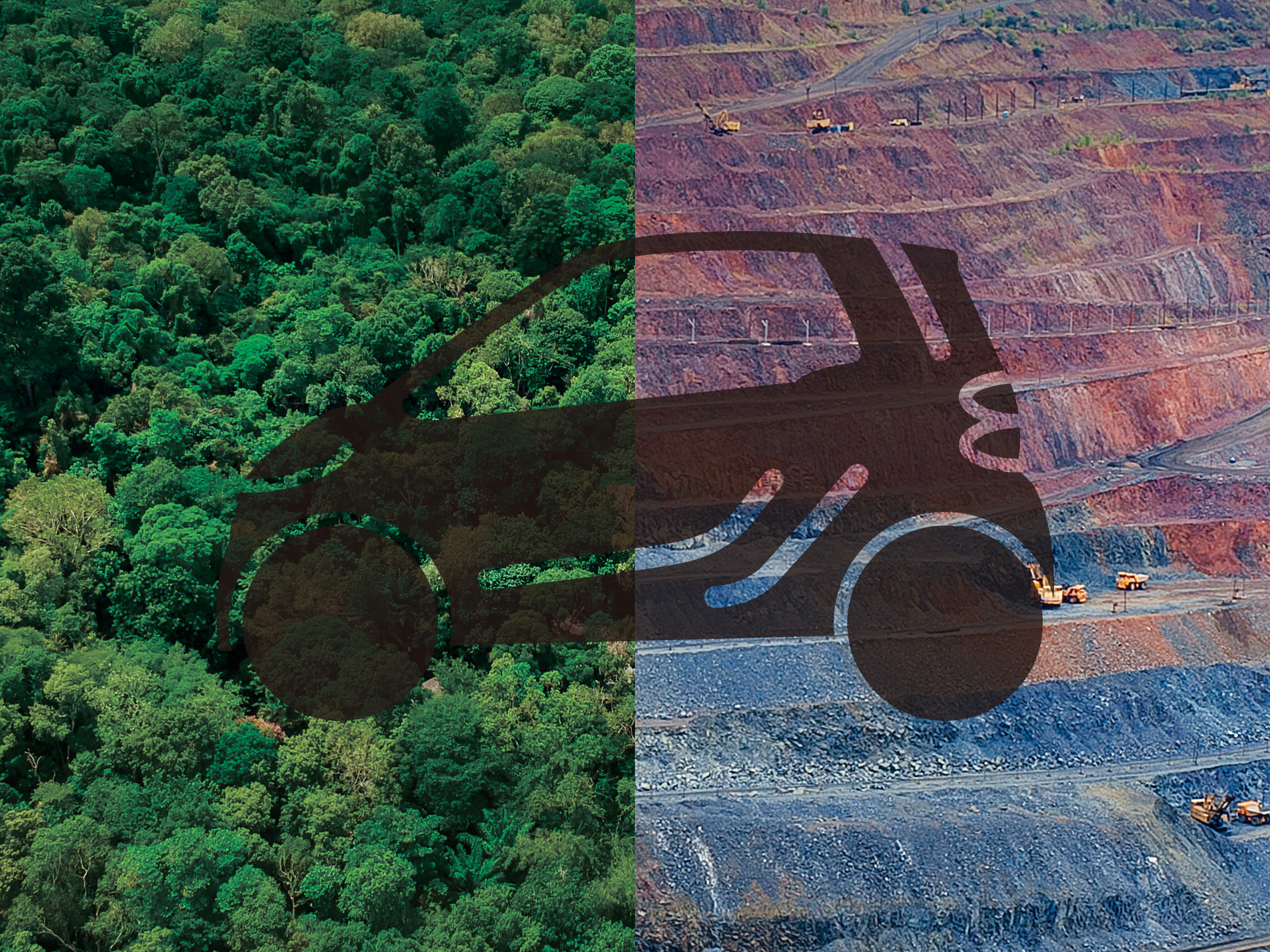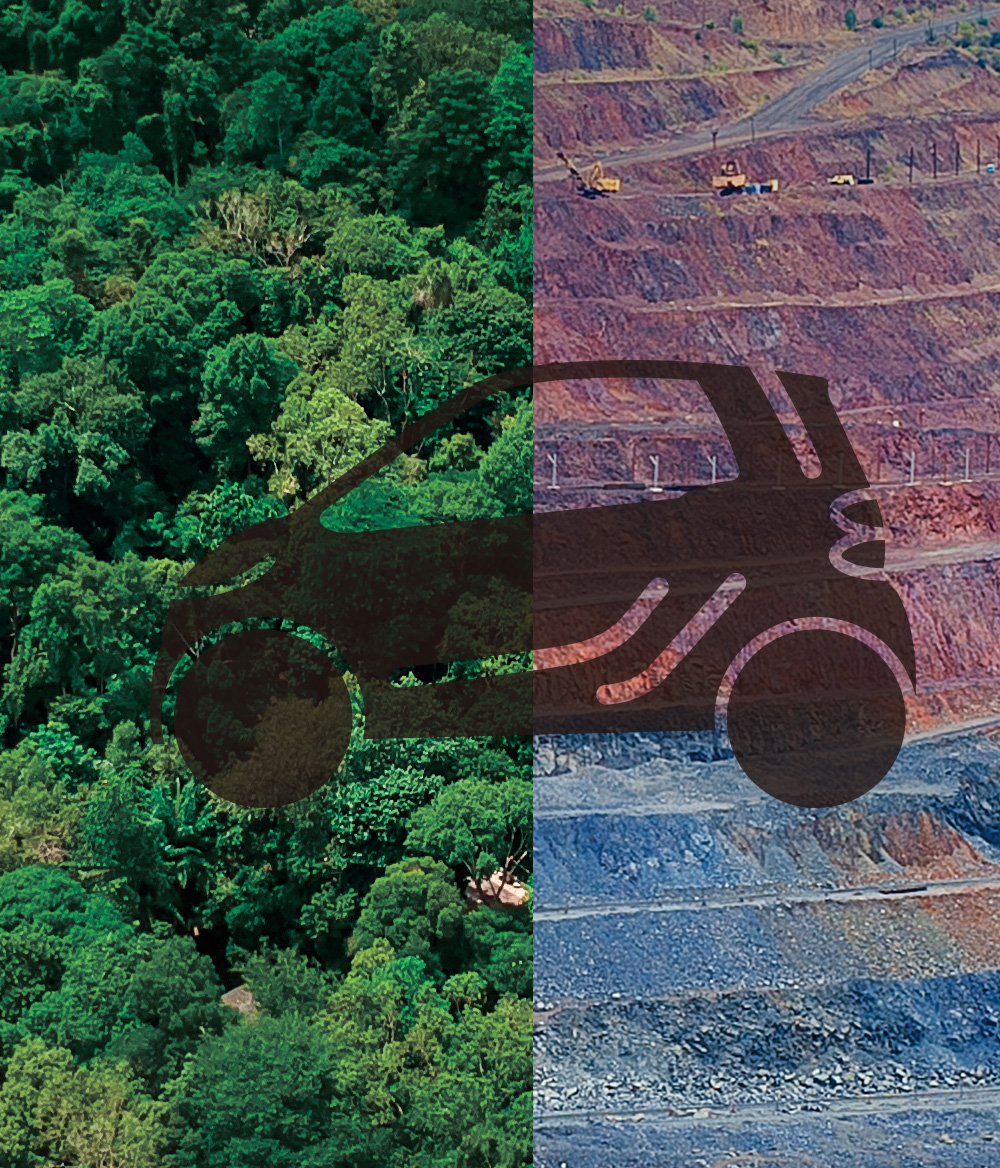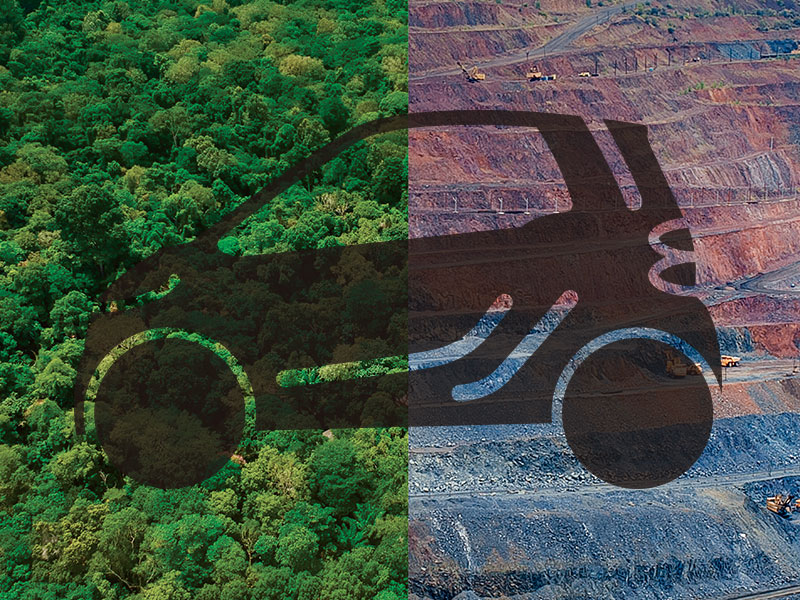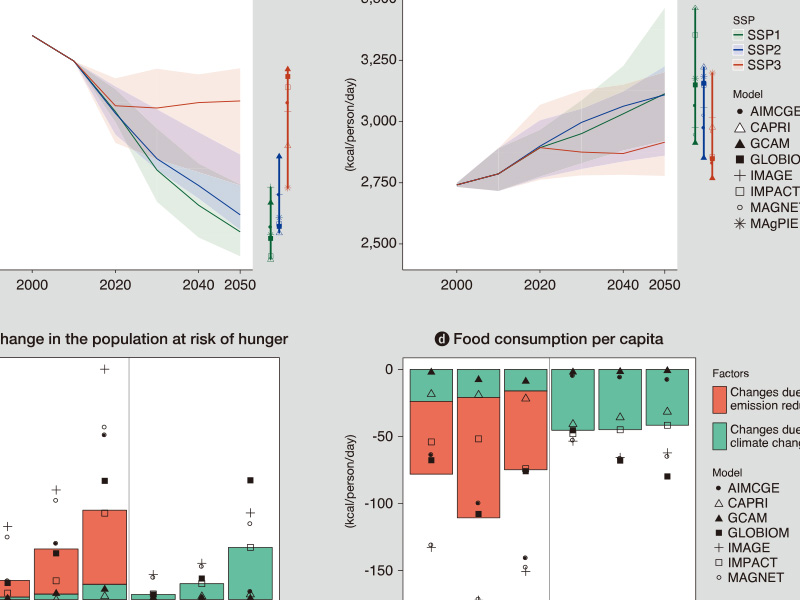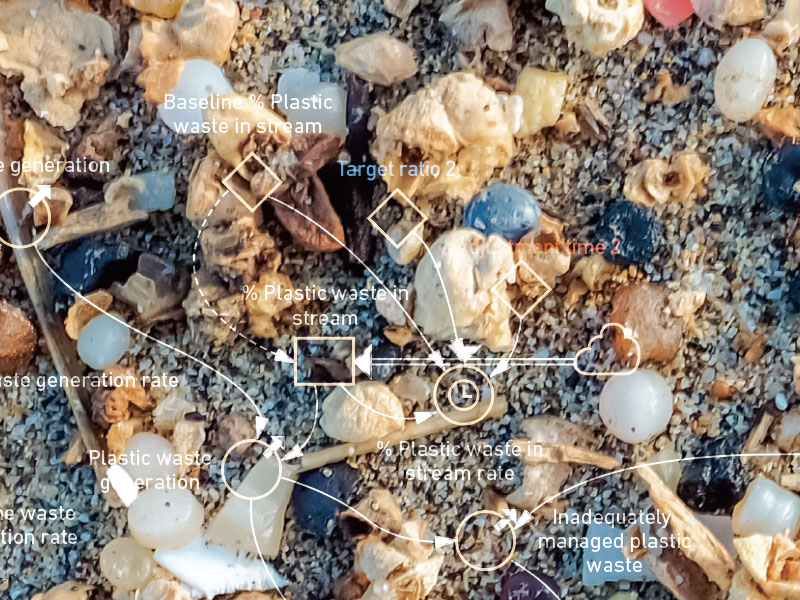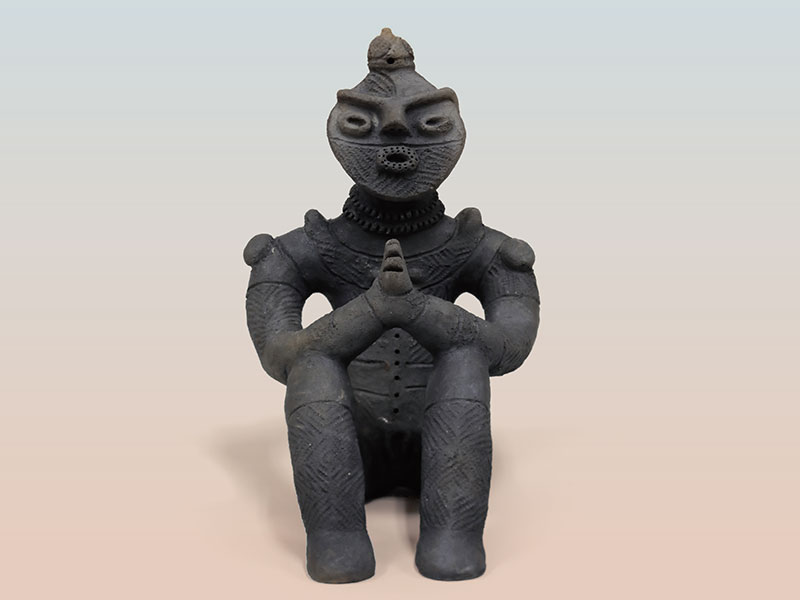STORY #1
Exploring all Possible Means of resolving the Resource Problem
Eiji Yamasue
Professor, College of Science and Engineering
How many kilograms of
mineral resources
does it take to make one car?
Mineral and energy resources are indispensable to human life and industry. Thus, finding ways to obtain minerals and energy resources in sufficient quantities, but sustainably, is vital. So, researchers from many disciplines have put their minds to solving this problem.
However, in reality, the problem is far more complex, and it cannot be solved with a single elixir. For example, the successful development of an innovative resource recycling technology is not sufficient on its own. To make the use of such technology sustainably, the production cost must be reduced, and policies must be laid out for its dissemination.
Given the nature of this challenge, Eiji Yamasue aims to use every means possible to resolve these resource-related problems without being bound by the limits of an academic field. So, while Yamasue’s expertise lies in the field of material science and thermodynamics, he applies a comprehensive and interdisciplinary approach, integrating perspectives from social sciences, such as those of industrial ecology and environmental systems engineering, to his own.
One of his research breakthroughs has had a significant impact on society. He developed an ingenious indicator called the Total Material Requirement (TMR) to evaluate mining activities by weight. TMR works by converting the amount of resources needed to produce a certain material or product to the mining amount. For example, to raise one cow for meat production, such as that for steak, approximately 7 ton of corn, 11 ton of silage, and 5 ton of soybeans are required as feed. Fertilizers used to produce this feed contain mineral resources, such as phosphorus and potassium.
The idea is to determine a given product’s resource intensity by quantifying the resource weight as the TMR. “Let us say we apply a mobile phone to this index; the conversion shows us that to manufacture a single phone, 20 to 30 kg of mineral resources needs to be excavated,” says Yamasue. He has collected data on all kinds of materials, including raw materials, foodstuffs, intermediate materials, energy, and products, creating a one-of-a-kind database in the world. There are currently over a thousand data entries in his database.
Based on the TMR, Yamasue has raised a shocking concern, which he calls the Resource Paradox Problem: “Our endeavors to reduce our carbon footprint may result in increased extraction of resources.” He takes next-generation vehicles, such as electric vehicles, as an example. According to his estimates, the TMR of one conventional gasoline-powered car is approximately 20 ton of iron and copper, and hybrid cars with lithium batteries require nickel and lithium in addition to the iron and copper, that is, a cumulative 50 ton of resources.
Furthermore, fuel cell vehicles require the extraction of 75 ton of resources, and electric vehicles run on anywhere from 70 to 120 ton of resources. “While it is true that electric vehicles provide fuel economy, if we include the costs of battery replacement due to aging as well as its initial installment, the resource efficiency is no different from that of a conventional car with a fuel economy of 10 km/L (approx. 23.5 mpg),” says Yamasue.

The true value of Yamasue’s research lies in bringing clarity to the resource problem so that it becomes possible to think of effective ways to find solutions. His current research focuses on recovering resources from waste by devising methods of extracting silicon and cobalt from silicon sludge and used lithium-ion batteries, or low-cost routes of recycling phosphorus in steel sludge. From among the methods he has discovered, he has given much attention to the use of microwaves.
As those who have used microwave ovens would know, one of the features of microwave radiation is its ability to heat up materials quickly when it is focused on those materials. “If we take advantage of the properties of microwaves, such as its high energy efficiency and its ability to maintain that efficiency even when the system is miniaturized, I believe we can create innovative and decentralized recycling bases,” says Yamasue. If we could set up a small recycling apparatus in people’s homes or at a community center that extracts usable resources from materials before their disposal, we could greatly enhance recycling efficiency.
Yamasue has been experimenting with the use of microwave heating apparatuses to extract resources from waste before its disposal and has already succeeded in extracting cobalt and nickel from lithium-ion batteries. “Cobalt and nickel are rare-earth materials that are not naturally found in Japan, and mining for these can lead to unfair labor practices and conflict. This is why novel recycling technologies are currently being developed. However, there have not been any application-ready inventions. We are hoping that our research can lead the way,” Yamasue says with hope.
Microwaves have another interesting feature: The more magnetic a material is, the easier it is for microwaves to raise its temperature. Yamasue honed into this property to develop new processes for resource circulation. “Generally, between iron oxide, Fe2O3, which is known as red rust, and iron sand, Fe3O4, the former is easier to deoxidize and is, thus, used in the production of iron. In contrast, Fe3O4 has a denser structure and is harder to deoxidize but has magnetic properties and responds better to microwaves than Fe2O3 does,” Yamasue explains. This means that when Fe3O4 is irradiated with microwaves, its temperature will rise rapidly, potentially making it easier to smelt. “By utilizing microwaves, we may be able to find a different reaction to enable resource extraction from waste than conventional methods. That is what makes our research so interesting,” Yamasue remarks.
Meanwhile, Yamasue’s lab is also practicing ancient and traditional Japanese ironmaking methods known as tatara iron making, so that students can gain both natural science and social science perspectives. Ritsumeikan University’s Biwako-Kusatsu Campus preserves the remains of an ancient archeological site for ironwork, the Bokewara Remains, under its grounds. The students are able to gain valuable experience by seeing traces of ancient ironworks with their own eyes while challenging themselves with traditional ironmaking. It is through this process that young researchers who could carry forward Yamasue’s research into the next generation are being nurtured.
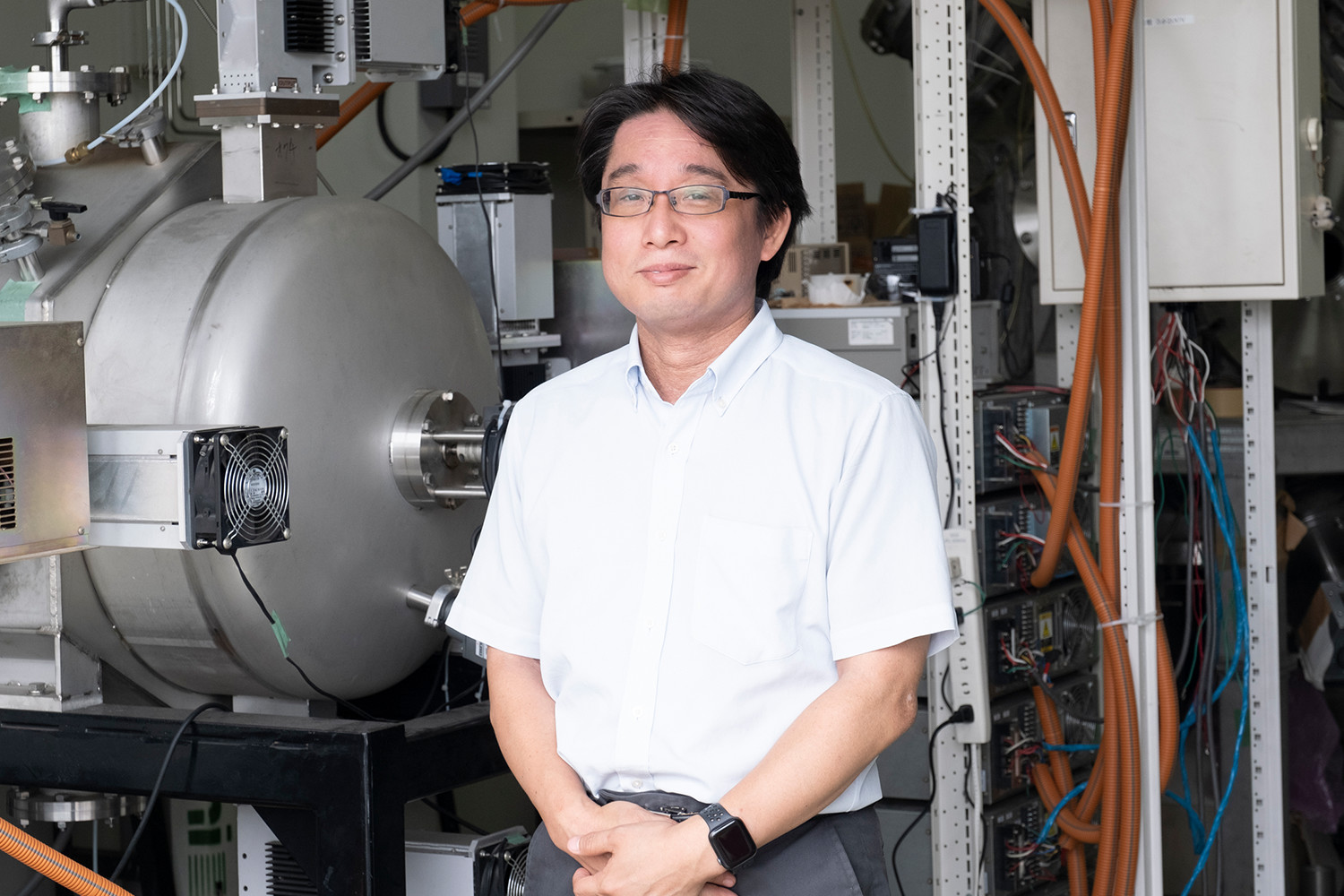
- Eiji Yamasue
- Professor, College of Science and Engineering
- Research Themes: Interdisciplinary research on sustainable energy and resource use
- Specialties: Environmental dynamics analysis; environmental impact assessment; environmentally conscious materials; and the recycling, designing, and evaluation of a sustainable and environmentally conscious system; nanomaterials engineering; thermal engineering; physical properties of metals/metal-base materials; metal-making/resource production engineering; and earth systems and resources engineering.
